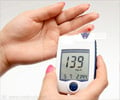Risk Factors
A) Community-Associated MRSA (CA-MRSA)
- Children - children can be more susceptible to CA-MRSA in comparison to adults as their immune system is underdeveloped.
- Contact sports- participants in contact sports are more prone to develop CA-MRSA as the bacteria easily spreads through cuts, abrasions and skin-to-skin contact.
- Sharing among athletes- When athletes share items such as equipments, razors, towels or uniforms their chances of being infected by MRSA increases.
- Weak immune system- People with weak immune system such as those suffering from conditions like HIV/AIDS, diabetes or cancer and also the elderly, are more likely to be prone to CA-MRSA.
- Living in crowded or unsanitary conditions and association with health care workers increases MRSA risk.
- Homosexuality- Studies, involving gay men in Boston and San Francisco, published in the Annals of Internal Medicine have revealed that CA-MRSA is spreading rapidly in the gay population and that their levels of risk were markedly higher than that of other men.
B) Healthcare Associated MRSA (HA-MRSA)
- Prolonged hospitalization is the prime reason for HA-MRSA especially in those patients with intravenous lines, catheters or feeding tubes and those with surgical wounds or burns.
- Recent treatment with antibiotics such as fluoroquinolones or cephalosporin can increase the risk of HA-MRSA.
- Health care staff especially those working with MRSA –positive patients can spread the infection.
- Patient visitors also contribute to the spread of infection.
It is therefore advised that patient visitors and health care staff should take care to use disposable gears such as masks, gloves and gowns before they enter the room of the infected individual.










